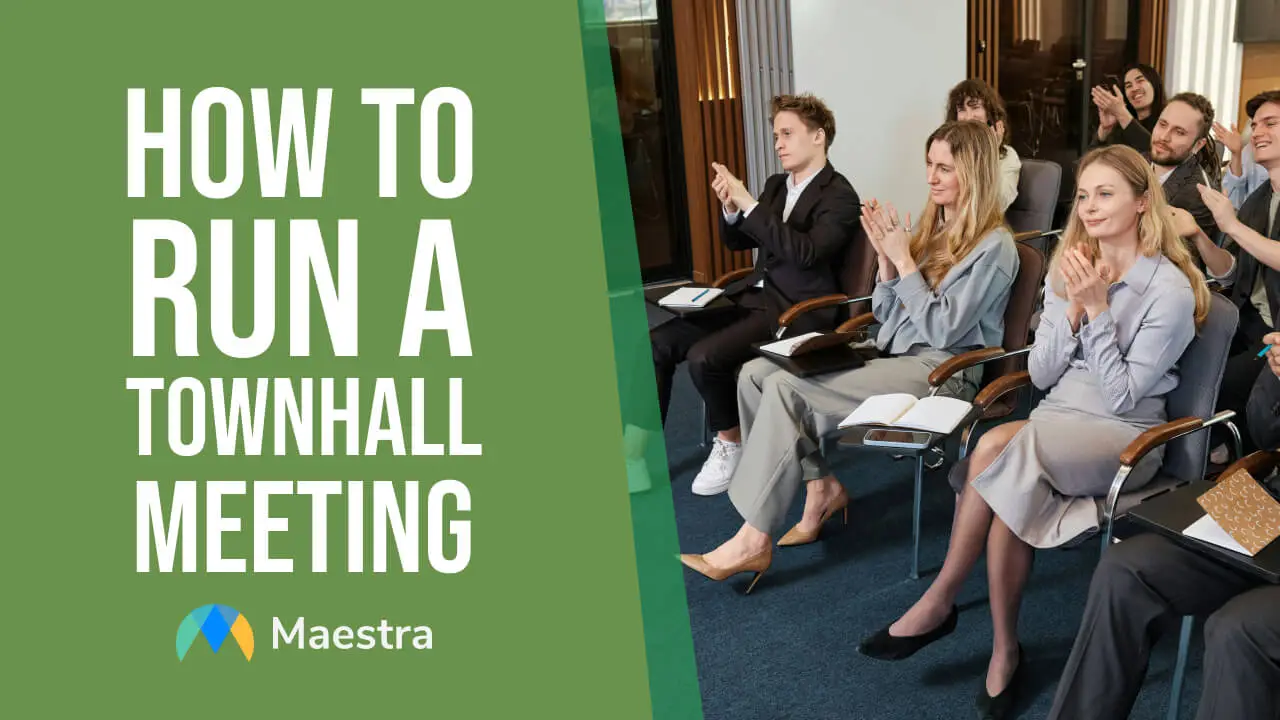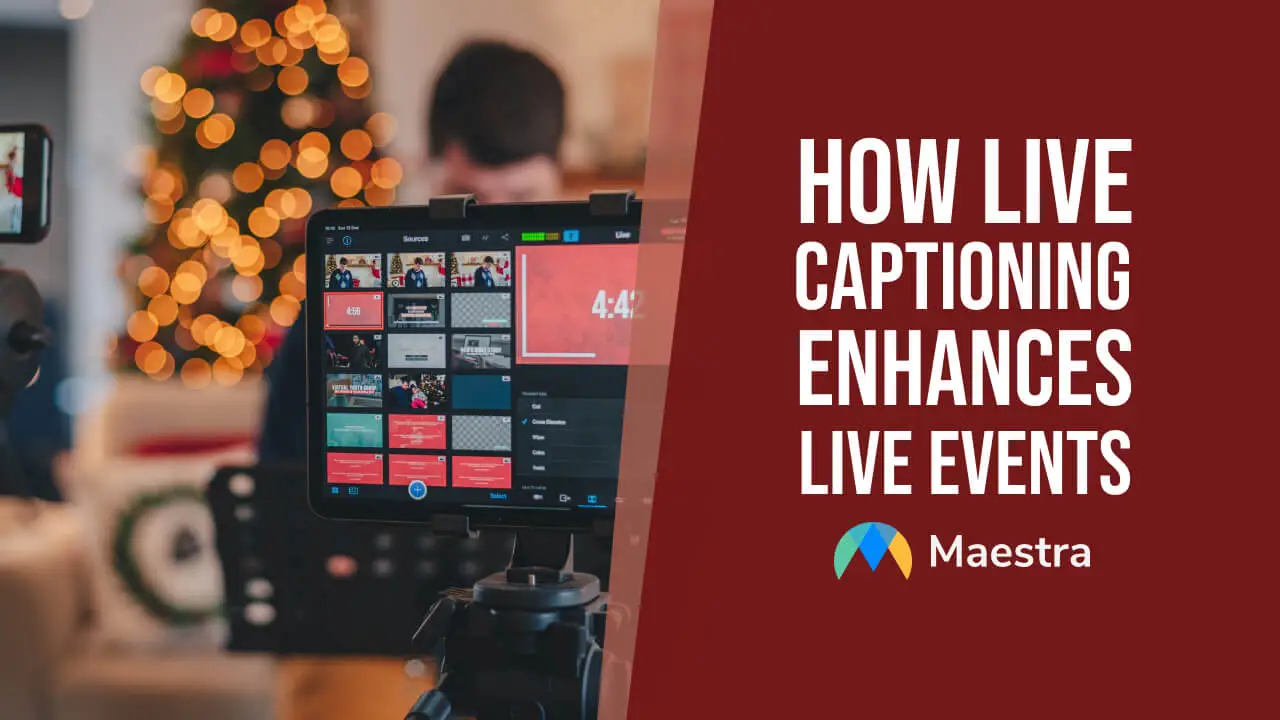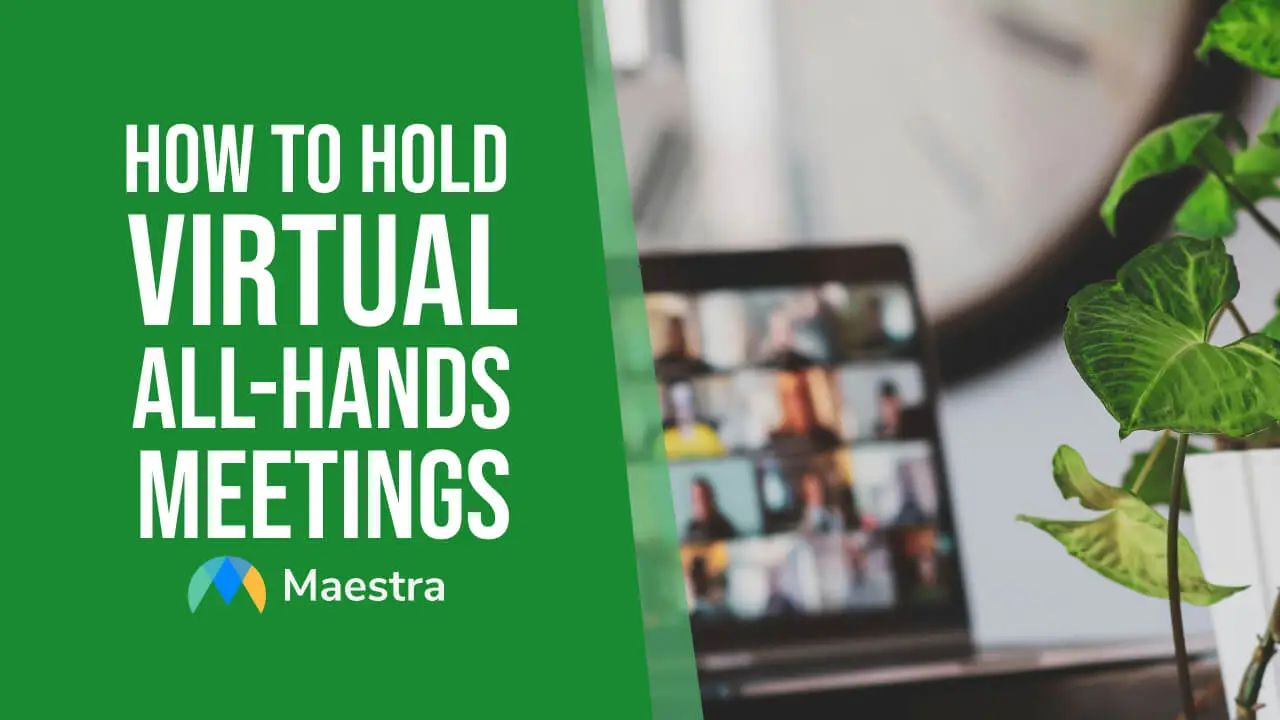How to Run a Town Hall Meeting (with 10 Best Practices)

Transparency and inclusivity: These are the two keywords you must have in mind if you’re about to conduct a town hall meeting. Whether in-person or virtual, the meeting must create a platform for honest dialogue, where all voices are heard and valued.
In this blog, we will:
- Explain what a company town hall meeting is and outline its format
- Guide you through the steps on how to run a town hall meeting
- List 10 best practices for conducting effective town hall meetings
- Share a sample town hall meeting invitation
Let’s get started.
What is a town hall meeting in a company?
A town hall meeting is a type of gathering where all employees and leadership come together to discuss company-wide issues, receive updates, and provide feedback. It is held to share company performance, upcoming projects, and significant decisions. It is also an opportunity for employees to ask questions and voice their concerns.

These meetings can be a valuable tool for building trust and morale within the organization as they are spaces for open communication and dialogue. Plus, it allows leadership to align the entire workforce with company goals, ensuring everyone is working towards the same objective.
Town Hall Meeting Format
A typical town hall meeting includes the following:
- Opening remarks: Welcome address by the CEO or other senior executive. This sets the tone for the meeting.
- Agenda overview: Presentation of the meeting agenda.
- Company updates: Recent achievements, challenges, and future plans shared by the leadership.
- Key presentations: Specific departments or leaders may give presentations on new or upcoming initiatives.
- Q&A session: Open floor for employees to ask questions and provide feedback. Moderated by a designated person.
- Closing remarks: Summary of key takeaways from the meeting. Accompanied by an encouraging message from the leadership.
This specific format can be modified depending on the company’s size and style. Smaller companies may keep it more informal, while larger companies may stick to a more rigid structure. However, the core elements of opening remarks, company updates, Q&A session, and closing remarks are generally consistent.

How to Run a Town Hall Meeting Step-by-Step
If you’re wondering how to conduct a town hall meeting, the following actionable tips will guide you through a seamless process, from pre-meeting preparation to post-meeting follow-ups.
Before the Meeting
- Create a structured agenda. List the main topics that will be discussed and assign a time slot to each.
- Prepare the speakers. Brief all presenters and leaders on the key messages, timing, and format. Conduct rehearsals if necessary.
- Send the meeting invitation. Include essential information (date, time, location, agenda) and clearly set what is expected of attendees.
- Test equipment and software. Ensure audio and video tools are functioning properly, and prepare alternative plans in case of technical difficulties.
- Practice your presentation. Familiarize yourself with your speech, focusing on your tone, pace, and body language.
During the Meeting
- Start on time. Begin promptly to show respect for everyone’s schedule.
- Present and follow the agenda. Stay on track and keep discussions focused on key topics. If necessary, be flexible and adjust the timing slightly to accommodate unforeseen circumstances.
- Moderate the Q&A session. Invite attendees to ask questions, making sure that all questions are addressed fairly and within the allotted time.
- Summarize key points. Recap the main takeaways from each section of the meeting to reinforce understanding and alignment among participants.

After the Meeting
- Send a transcript and summary. Distribute both to all participants and those who couldn’t attend. The summary must contain key points, decisions and action items discussed.
- Acknowledge participation and contributions. This could be through a follow-up email, a company-wide shout-out, or other forms of recognition.
- Request feedback. Use surveys, feedback forms, or informal discussions to identify areas for improvement for the next town hall meeting.
- Monitor progress. Follow up with responsible teams or individuals, and provide support as needed to keep projects and initiatives on track.
Convert Your Town Hall Meeting to Text
10 Best Practices for Town Hall Meetings
Besides the core steps mentioned above, these additional 10 best practices will elevate your meeting’s effectiveness and drive more meaningful interactions during the event.
- Be transparent. Honesty and clarity lie at the heart of a successful town hall meeting. Share information openly even if it’s challenging, and avoid secrecy or overly polished messages to promote a culture of accountability.
- Maintain a consistent format. A predictive structure will help attendees feel comfortable and engaged. It also ensures that each meeting covers essential elements systematically, such as updates and Q&A sessions.
- Address sensitive topics carefully. Be prepared to answer challenging questions and avoid making judgmental or dismissive statements. Clearly communicate the context and reasoning behind decisions, and provide supportive resources if needed.
- Highlight leadership visibility. Having key leaders participate in the town hall meeting will demonstrate their commitment to employees and the company’s future. Their presence can enhance credibility and foster a sense of connection between leadership team and staff.
- Celebrate achievements. These can range from acknowledging milestones to rewarding individual contributions. For example, you can showcase a recent company award or share the success story of a team.
- Utilize visuals. Charts, graphs, and infographics can make complex data more understandable and engaging. Use them to break down information into digestible chunks so attendees can grasp key points quickly.
- Leverage interactive meeting tools. Live polls and surveys can lead to a more dynamic town hall meeting. For instance, for the Q&A session, employees can submit questions via a survey tool, and then vote on the most relevant questions for leadership to answer.
- Follow up on unanswered questions. After the meeting, provide detailed responses through follow-up emails or an internal FAQ document. This will show that all employee concerns are taken seriously.
- Prioritize inclusivity. Regardless of their background or location, the meeting should be accessible to all individuals. Consider different time zones, provide translation services, and create an environment where diverse perspectives are welcomed.
- Incorporate live captioning. This practice will make the meeting more accessible to deaf and hard of hearing attendees, as well as to those who struggle with foreign language or accents. That way, everyone can follow along with the meeting’s content in real time, fostering a more equitable atmosphere.
Sample Town Hall Meeting Invitation to Employees
This sample town hall meeting invitation can act as a template to make sure you include all essential information and set the right tone for the event. Feel free to customize it according to your company’s specific style and needs.
Dear [...],
We invite you to attend our upcoming Town Hall Meeting on [Date] at [Time] in [Location].
This will be a great opportunity for us to come together, discuss important company updates, and share what’s ahead. Our leadership will highlight the latest company news as well as future plans, and answer questions or concerns you may have.
Below is the meeting agenda:
- Welcome and overview by [CEO/Leader’s Name]
- Major company updates
- Key presentations by [Presenter Names and Subjects]
- Q&A session
- Closing remarks
Please review the agenda and bring any questions or topics you’d like to discuss.
We encourage all employees to attend this important event, and look forward to seeing you there.
Best regards,
[Your Name]
[Your Title]
[Company Name]

Frequently Asked Questions
How do you make virtual town halls more interesting?
How do you set up a Microsoft Teams town hall meeting?
What is the difference between a town hall meeting and an all-hands meeting?
Summary
From setting a clear agenda to follow-up processes, this blog focused on how to conduct a town hall meeting successfully. It also emphasized 10 best practices for maximizing the effectiveness of these gatherings, and shared an invitation template for professional and engaging communication.
When planning a town hall meeting, remember these 3 golden rules:
- Stick to the agenda. This will help you cover all topics efficiently, and respect participants’ time by preventing the meeting from drifting into unrelated areas.
- Communicate transparently. This includes openly sharing both successes and challenges, as well as the rationale behind decision-making processes.
- Embrace diverse voices. Encouraging input from a wide range of perspectives will enrich discussions and contribute to the overall success of the company.
With the actionable strategies in this blog, you’re ready to transform your town hall meetings into truly impactful events.


